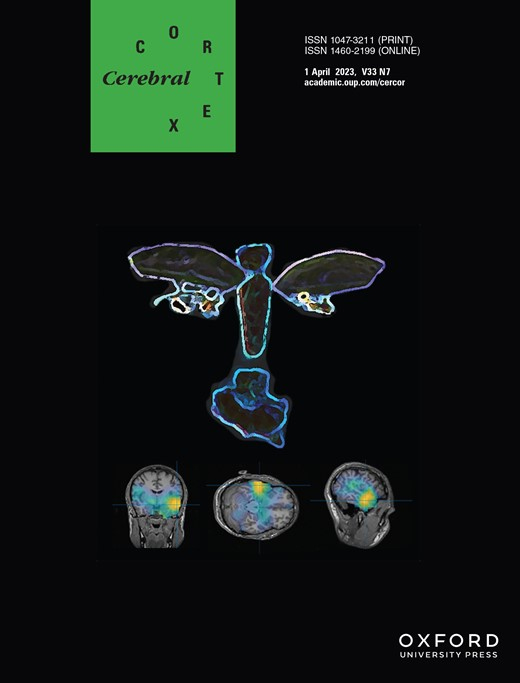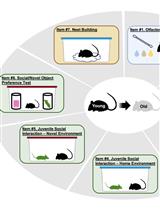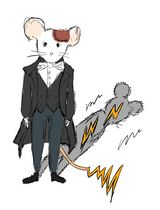- EN - English
- CN - 中文
A Standardized Protocol for Early-life Stress-induced Social Defeat in Mice
小鼠早期生活应激引起的社会失败的标准化方案
发布: 2023年06月20日第13卷第12期 DOI: 10.21769/BioProtoc.4703 浏览次数: 1289
评审: HSIU CHUN CHUANGMohammed Mostafizur RahmanJordi Boix-i-CollAnonymous reviewer(s)
Abstract
Neuropsychiatric diseases, like depression, have a considerable and persistent impact on human health; however, little is known about their underlying pathogenesis. Social defeat is a model for stress-induced psychopathologies that could present with behaviors resembling those observed in humans with depression. However, previous animal models of social defeat mainly focus on adults. Here, we re-design the protocol of early-life stress-induced social defeat paradigm, which is based on a classic resident–intruder model. Briefly, each two-week-old experimental mouse of C57BL/6 strain is introduced into the home cage of an unfamiliar CD1 aggressor mouse for 30 min per day for 10 consecutive days. Later, all experimental mice are raised individually for another month. Finally, the mice are identified as defeated through social interaction and open field tests. This model has been shown to be etiological and predictive and provide high validity and could be a powerful tool to investigate the underlying pathogenesis of early onset depression.
Graphical overview
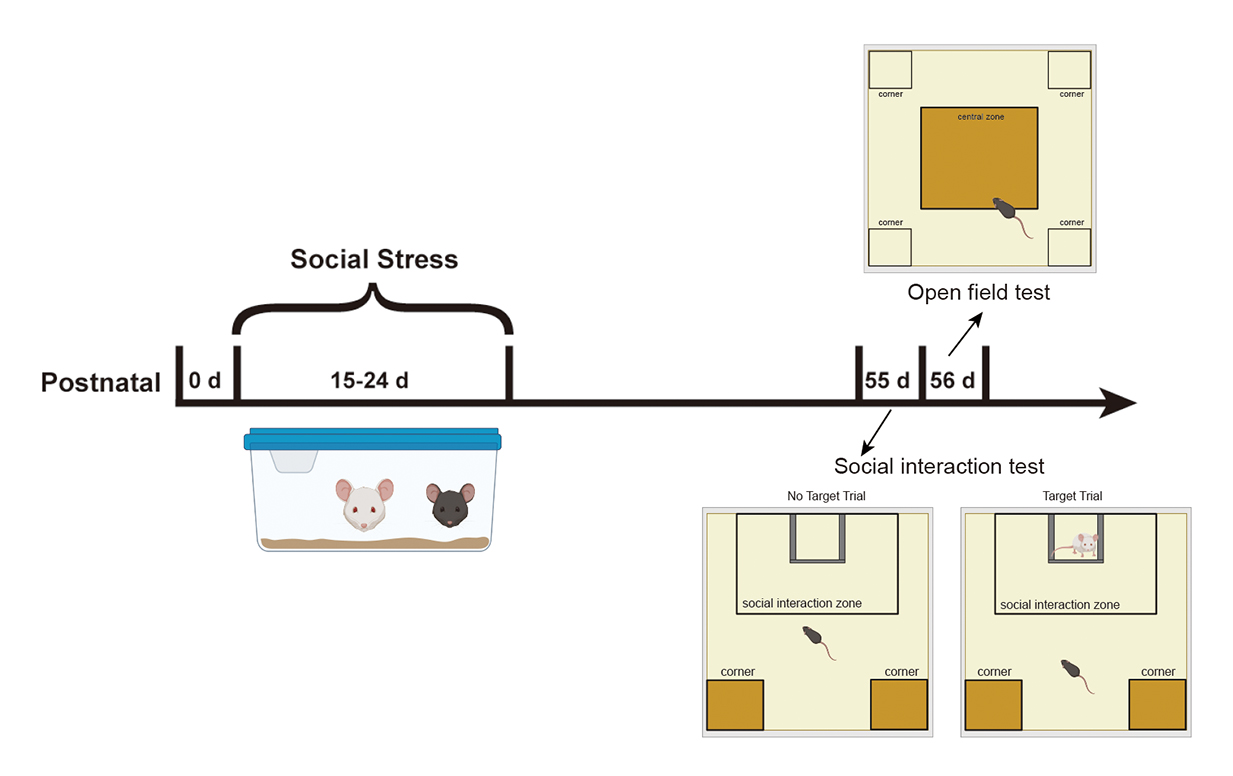
Background
Mood and anxiety disorders have a growing prevalence, potentially affecting one out of four people during their lifetime (Anacker et al., 2018; Du et al., 2021). This could result in a great burden for the affected individuals, their families, and the society. Establishing high-validity animal models is of great importance for exploring these diseases (Becker and Wojtowicz, 2007; Anacker and Hen, 2017; Anacker et al., 2018). It has been reported that social stress plays a central role in the pathogenesis of different psychiatric disorders (Padilla-Coreano et al., 2016). Thus, scientific researchers have strived to establish animal models of social defeat that would potentially provide significant and basic information for understanding several of the physiological and behavioral abnormalities induced by social stress between individuals (Snyder et al., 2001; Golden et al., 2011; Dioli et al., 2017).
Several forms of animal models have been established, including learned helplessness, chronic unpredictable mild stress (CUMS), chronic restraint stress, chronic social defeat stress (CSDS), and others (Toyoda, 2017). Each protocol has its advantages and disadvantages. For example, the CUMS model is widely regarded as the most classic animal model of depression in use. One of its main advantages is its ability to avoid adaptive responses in animals caused by single and repetitive stimuli. However, this model also has some drawbacks, such as a lengthy modeling time and a large workload required. Our protocol is based on the CSDS model; briefly, it is established based on intermittent physical interaction between a dominant resident and a submissive intruder (Schloesser et al., 2010; Golden et al., 2011; Anacker et al., 2018).
Modifications have been made to the CSDS model according to different study aims, mainly regarding species and strains being chosen, acute or chronic exposure to stress, and the terminologies used for identifying social defeat (Anacker et al., 2016; Castilla-Ortega et al., 2016; Du et al., 2021). Here, we introduce a general procedure of a social defeat paradigm, with a focus on early-life stress. In order to enhance the aggression level of the resident mice, we chose older CD1 mice and younger C57BL/6 mice as aggressors and intruders, respectively. The C57BL/6 strain has been reported to have a greater metabolic susceptibility to social defeat stress; we chose male mice as they show territorial behavior more universally and stably than female mice. The behavioral features of social defeat are evaluated by subsequent social interaction test (SIT) and open field test (OFT). SIT is a simple test in which behaviors and staying time in the interaction and corner zones are video recorded. Compared to a normal C57 mouse, which is motivated to explore, a mouse subjected to social defeat would like to avoid the CD1 mouse in the wire mesh (Golden et al., 2011). OFT is a common measure of exploratory behavior and general activity of mice. The recording of outcomes like center time is likely to gauge some aspects of emotionality, including anxiety and depression. This model could be used for exploring specific molecular mechanisms of early-life stress-induced social defeat and depression and may open opportunities for the development of new antidepressant drugs.
Materials and reagents
C57BL/6 mice (Beijing Vital River Laboratory Animal Technology Co., Ltd). Mice have free access to water and food on a 12:12 h light/dark cycle. Male and female mice were bred to generate pup litters for the experiments. In general, experiments are run in cohorts of 20–40 mice at one time.
Male CD1 mice (Beijing Vital River Laboratory Animal Technology Co., Ltd). Mice were single housed with free access to water and food on a 12:12 h light/dark cycle. CD1 mice should be single housed for at least a week before aggression screening.
Surgical scissors and suture (RWD, catalog number: SP0009-M)
Isoflurane (RWD, catalog number: R510-22-10)
Cleaning solution (Oxytech, catalog number: D-50/500)
Equipment
Arena (Wuhan Yihong Technology Co., Ltd, catalog number: YH-OF-M/R): 48 cm × 48 cm × 40 cm with an empty wire mesh enclosure (10 cm × 10 cm × 15 cm) alongside the middle of one of the arena walls. The 10 cm wide area surrounding the wire mesh cage is called the social interaction zone; the opposing corners in the arena are called corner zones (Figure 1A).
Arena (Wuhan Yihong Technology Co., Ltd, catalog number: YH-OF-M/R): 48 cm × 48 cm × 40 cm with a center zone (20 cm × 20 cm) and four corner zones (10 cm × 10 cm) (Figure 1B)
Video recording equipment (EthoVision XT) (Figure 1C)
Stopwatch for timing
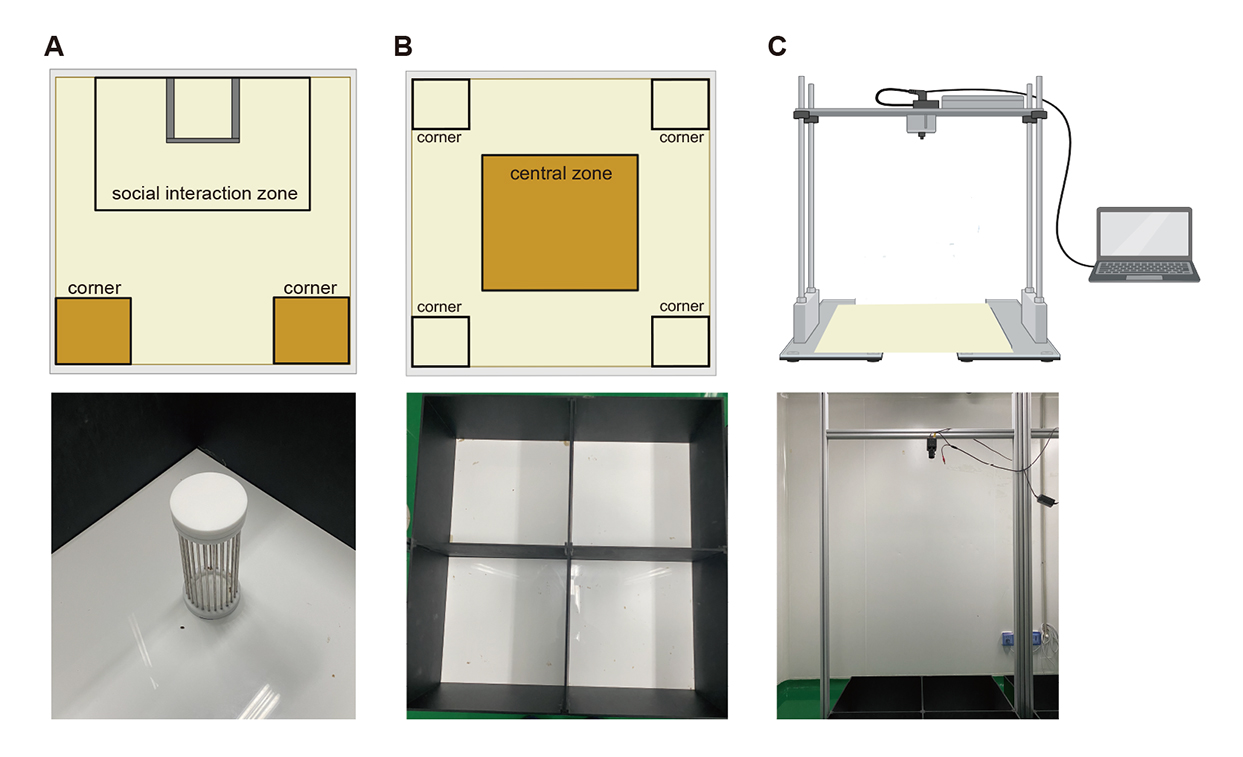
Figure 1. Schematic and physical objects of the social interaction arena (A), open field arena (B), and video-tracking equipment (C)
Software
EthoVision XT software (Noldus, https://www.noldus.com/ethovision-xt) or other video-tracking packages.
GraphPad Prism Software (version 7.0) or other statistical software.
Procedure
文章信息
版权信息
© 2023 The Author(s); This is an open access article under the CC BY-NC license (https://creativecommons.org/licenses/by-nc/4.0/).
如何引用
Yang, Z. and Wang, D. (2023). A Standardized Protocol for Early-life Stress-induced Social Defeat in Mice. Bio-protocol 13(12): e4703. DOI: 10.21769/BioProtoc.4703.
分类
神经科学 > 行为神经科学 > 实验动物模型
您对这篇实验方法有问题吗?
在此处发布您的问题,我们将邀请本文作者来回答。同时,我们会将您的问题发布到Bio-protocol Exchange,以便寻求社区成员的帮助。
提问指南
+ 问题描述
写下详细的问题描述,包括所有有助于他人回答您问题的信息(例如实验过程、条件和相关图像等)。
Share
Bluesky
X
Copy link


